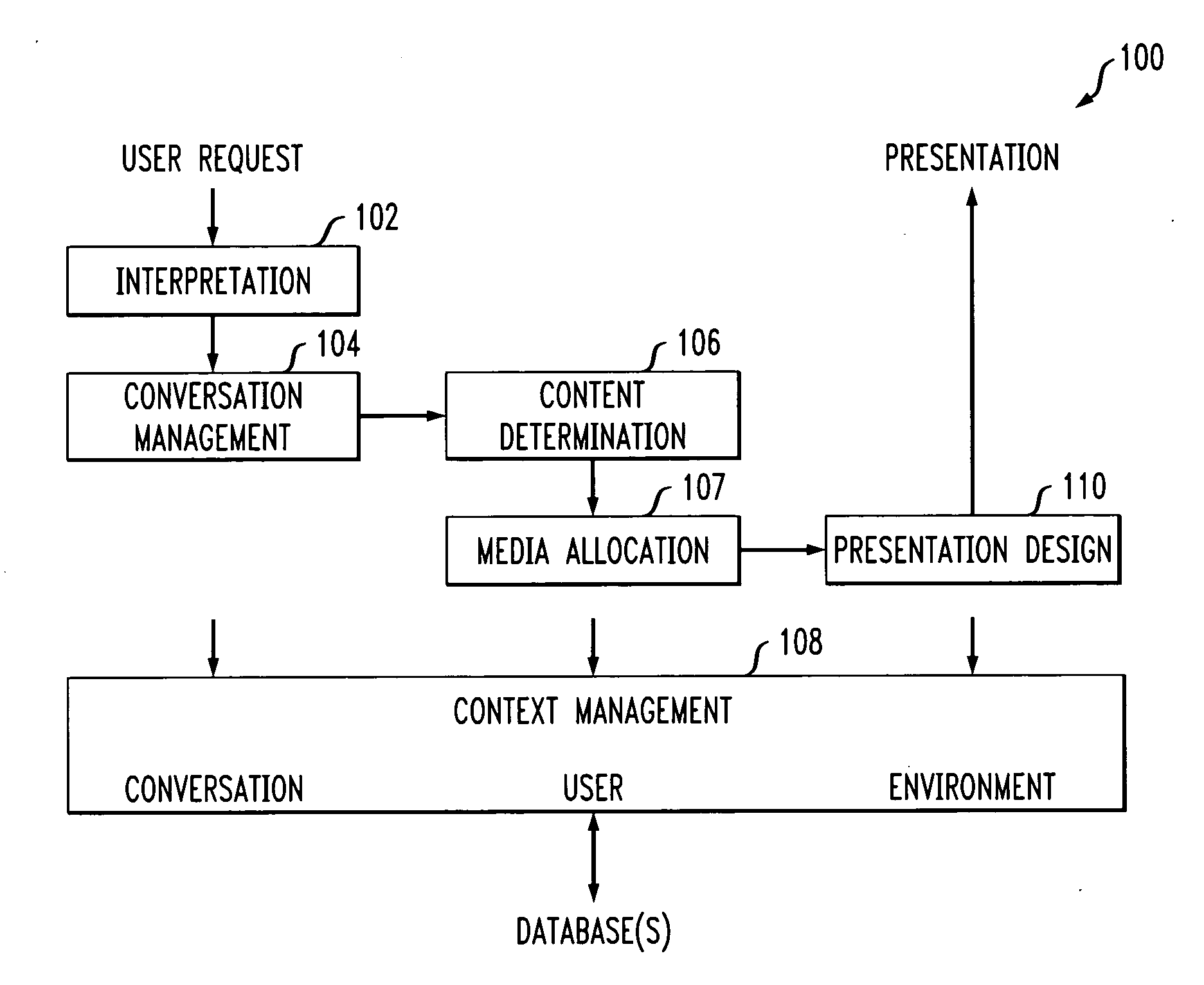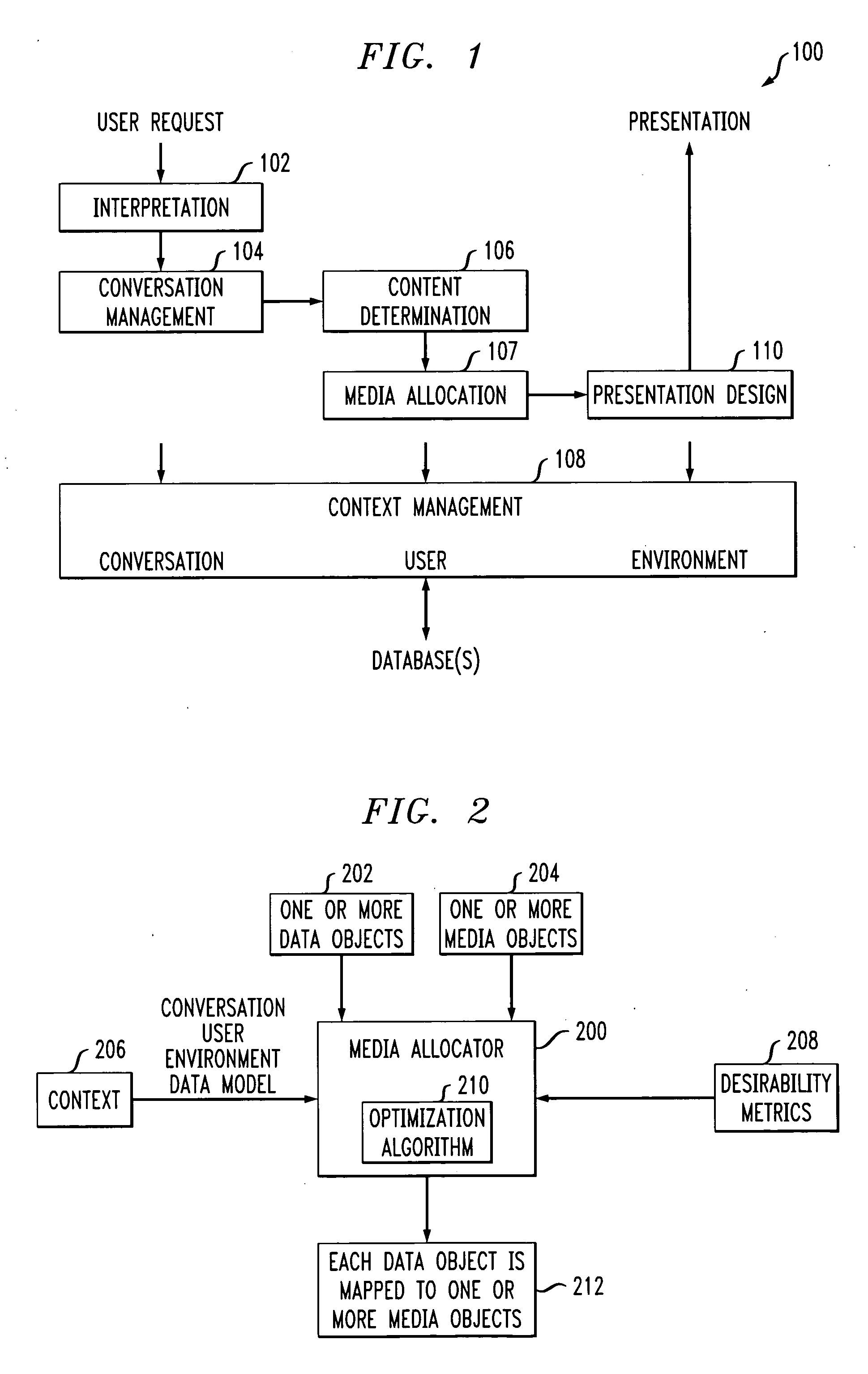Optimization-based media allocation
a media allocation and optimization-based technology, applied in multimedia data retrieval, instruments, computing, etc., can solve problems such as unsatisfactory media allocation results, unanticipated cross, and impracticality of using a rule-based or schema-based approach
- Summary
- Abstract
- Description
- Claims
- Application Information
AI Technical Summary
Benefits of technology
Problems solved by technology
Method used
Image
Examples
Embodiment Construction
[0027] It is to be understood that while the present invention will be described below in the context of exemplary information-seeking applications such as a real-estate application, the invention is not so limited. Rather, the invention is more generally applicable to any application in which it would be desirable to provide optimization-based media allocation techniques and services. Further, the invention is more generally applicable to any application in which it would be desirable to provide quality presentations of information or such presentation service.
[0028] As used in the following context, we first define the following terms. We use the term “data objects” to broadly refer to any type of data content that is intended to be presented (e.g., a list of house listings residing in a real-estate database or a list of hotels existing on a website). We use the term “media objects” broadly to refer to any type of media that is available to be used to present the data content, su...
PUM
 Login to view more
Login to view more Abstract
Description
Claims
Application Information
 Login to view more
Login to view more - R&D Engineer
- R&D Manager
- IP Professional
- Industry Leading Data Capabilities
- Powerful AI technology
- Patent DNA Extraction
Browse by: Latest US Patents, China's latest patents, Technical Efficacy Thesaurus, Application Domain, Technology Topic.
© 2024 PatSnap. All rights reserved.Legal|Privacy policy|Modern Slavery Act Transparency Statement|Sitemap



